A troupe of hand puppets, in medieval style for playing our ‘motions’ at events.
I grew up watching family puppet shows and had wanted to play with medieval puppets for many years. Whenever we visited as children, my Austrian grandfather would put on a puppet show with his collection of puppets, which he had hand-carved. He made up stories, using his European versions of the classic characters.

The opportunity to have my own puppets came in 2011, when we were asked to provide some medieval fairground entertainment. I did some research on medieval puppetry, and we built a puppet theatre and an initial cast of hand-puppets. My husband wrote a script, and we played it to the enjoyment of all.
The “Head on a Stick Players” were born….
Research and Design
When I started researching medieval puppetry, I found it difficult to find good information – there was much assumption, but not much well documented evidence. Then I found The History of the English Puppet Theatre by George Speaight (1955) – the book in the field (and now in an updated 2nd edition).
There are references to puppets from Ancient Greece, and throughout the middle ages.
- The 13th century Provencal romance Flamenca contains a description of entertainments at a feast given on St. John’s Day which includes the line: “Here one that made the puppets play“.
- In 1300, Hugo von Trinberg’s poem Der Renner relates how comedians used to bring small puppets from under their cloaks.
- In the 14th century, Chaucer refers to puppets in his Canterbury Tales, referring to Sir Thopas:
- “He in the waist is shaped as well as I; This were a popet in an arm to embrace for any woman small and fair of face“
- In 1408, there is an account of one Perrinet Sanson who performed with puppets in a small French village.
By the late sixteenth century, there are many more references to puppets and ‘motions’. A ‘motion’ is the Elizabethan term for a puppet or puppet play, although the term was very loosely applied and would also include automata, toys and peepshows.
Speaight maintains that although marionettes were well known in Europe, and to some extent in England, the main form of puppetry in England was hand puppets. The first reference to Shadow Puppets in Europe and England is 1633.
I could find no information on what the heads of medieval hand puppets were made of. There is reference to puppets with papier-mâché heads in 1640, and this seemed like a practical solution for my puppets.
Construction
I start with a heavy cardboard tube, with a 2cm opening – this is where the forefinger will fit. I dip half a sheet of newspaper in dilute glue, scrunched it around the top of the tube into a rough head shape and secure it with thread.
Then I tear paper in narrow strips, wet with glue and layer up on the head, improving the shape as I go. 3 layers gives a good strong set. I use small bits of glued paper to form nose, ears, etc, holding in hold in place with narrow strips of paper. Horns need more support – skewers pushed into the base and glued in place. I glue several layers of string around the base of the tube, to attach the puppet body.
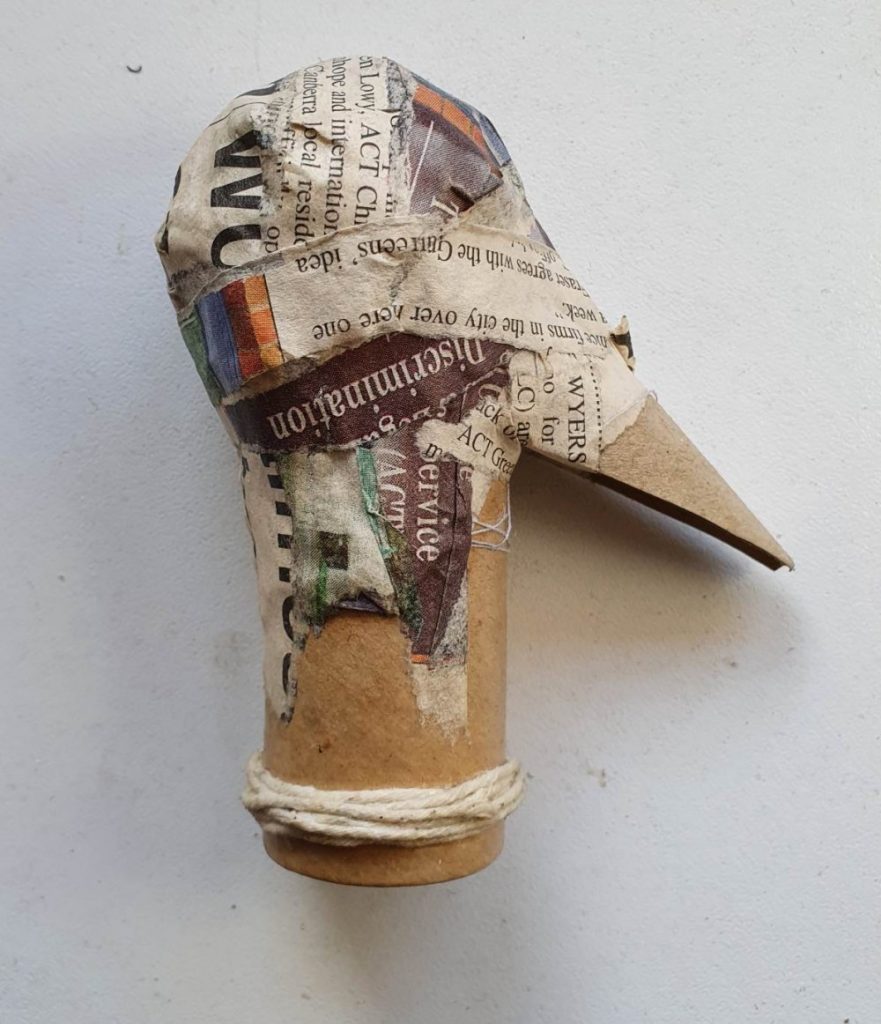
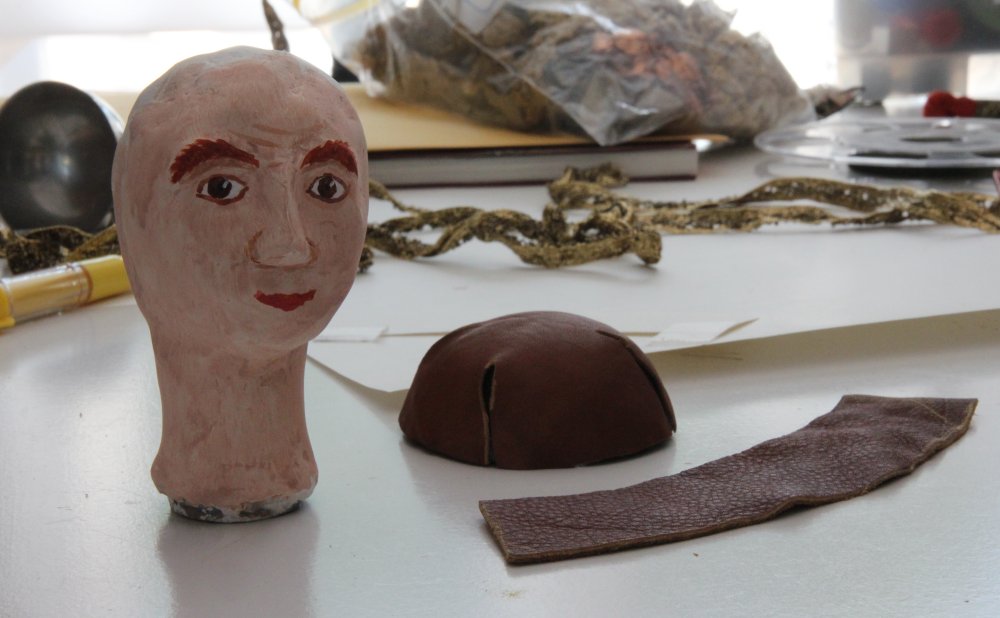
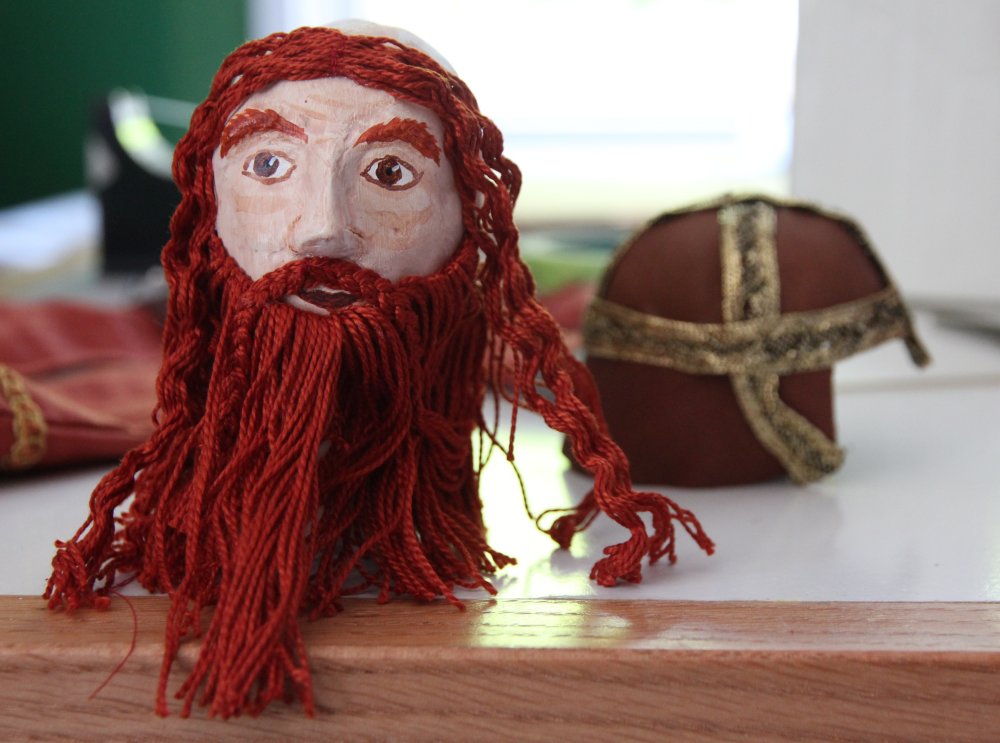
Once dried, I spread thick gesso (whiting mixed with hide glue) over the top, smoothing to refine the details. Once dry, I sand – and add more gesso if needed. A final coat of thin gesso gives a good surface. Once dry, I paint to suit the character, then cover with matt varnish to protect the paint.
I make the hair using crochet cotton wound around a cardboard loom. I machine sew a fine zigzag down the middle for a part, then glue to the head and trim as needed. Hands are two layers of felt, sewn together and fingers sewn in.


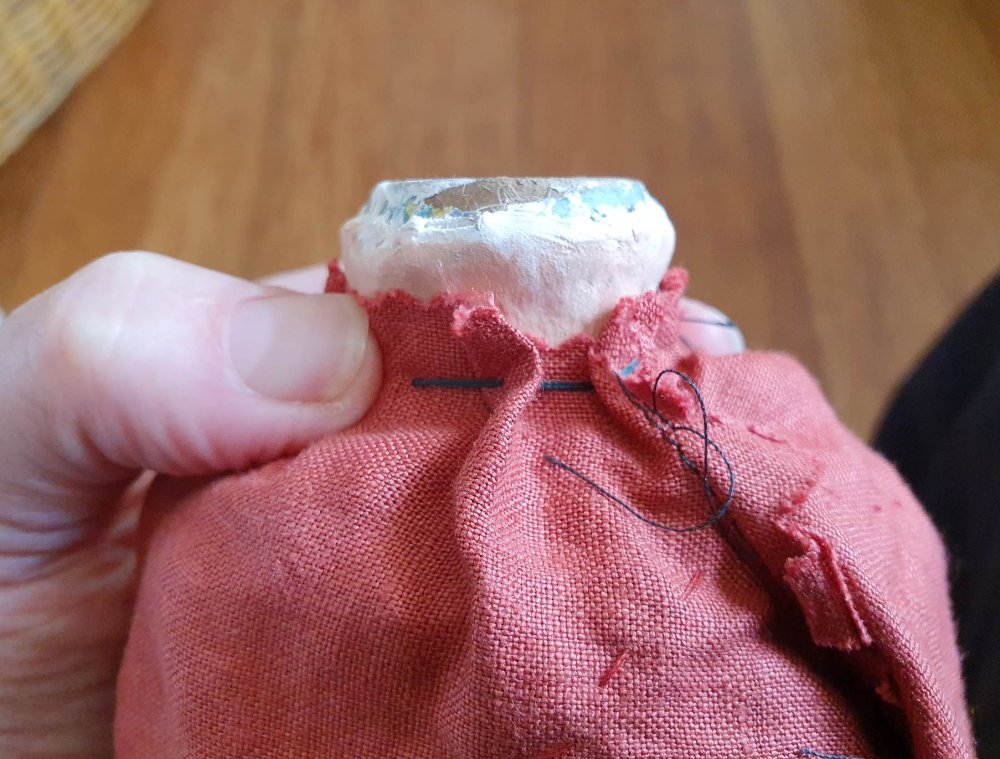
I make the body of the puppet to suit the character, trying to keep true to a renaissance look (or medieval imagination) – the clothing is mostly16th century. The body is gathered around the neck opening and tied securely onto the puppet head.
The puppets can also be dressed with props – crowns, helmets, belts, hats, etc all help set specific characters.

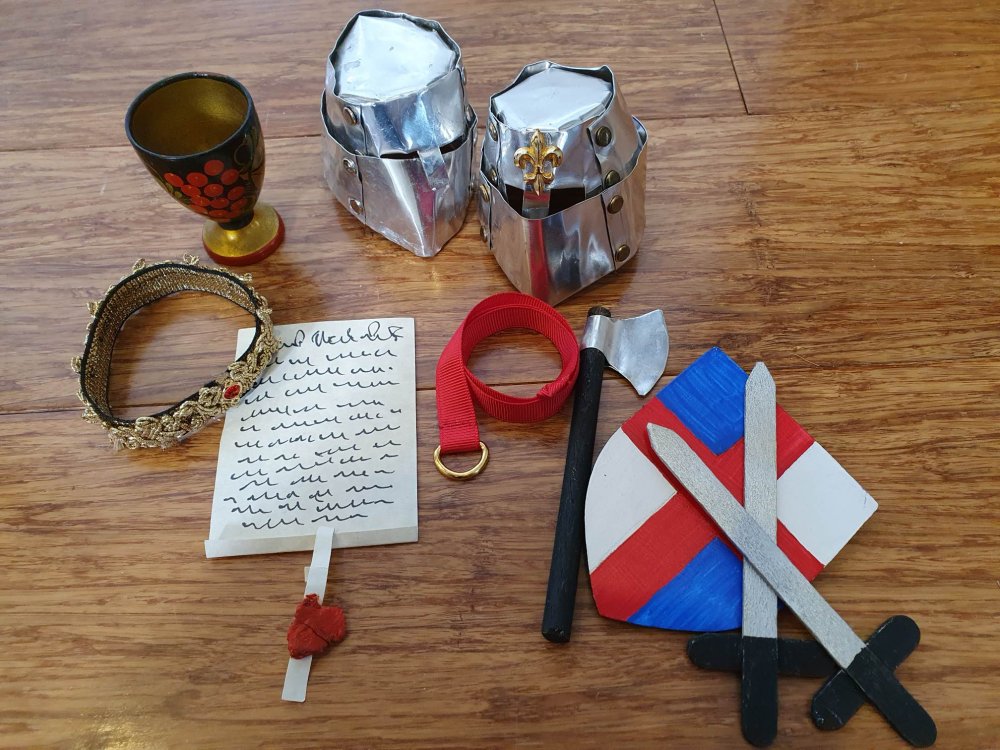
The cast
Running a puppet theatre is like a repertory company – you have a cast of basic ‘types’ who then play the character you need.
The initial cast comprised the basic characters we needed to perform the first play – a King & Queen (or Baron/Baroness, Father/Mother), Prince & Princess (or Son/Daughter etc), Headsman (woodsman, peasant) and Daisy the Horse (a firm favourite with children).
Over time, new productions have meant more characters – an Old woman (or witch) and Swashbuckler, extra Man and Young woman (barmaid, etc), Monk and Devil, Dwarf/Viking, Heraldic panther and Rabbit.

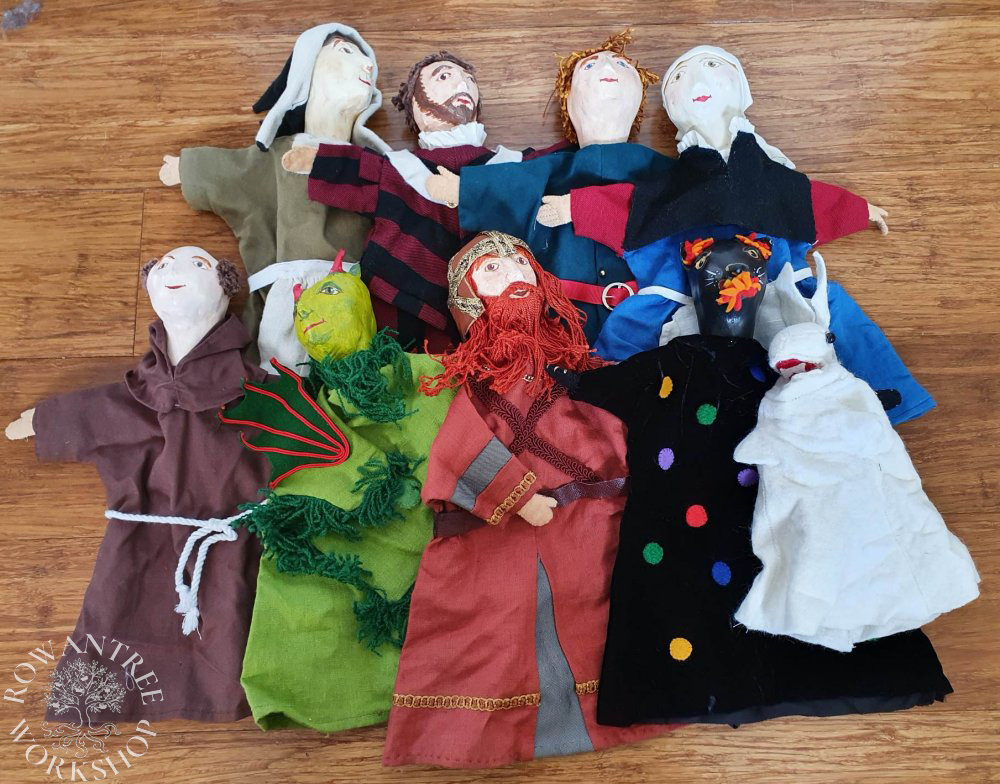
I’m sure I’ll be making more puppets in future, as new plays require more characters.

After the first play, I rebuilt the puppet theatre to make it more medieval in style – and easier to pack.

